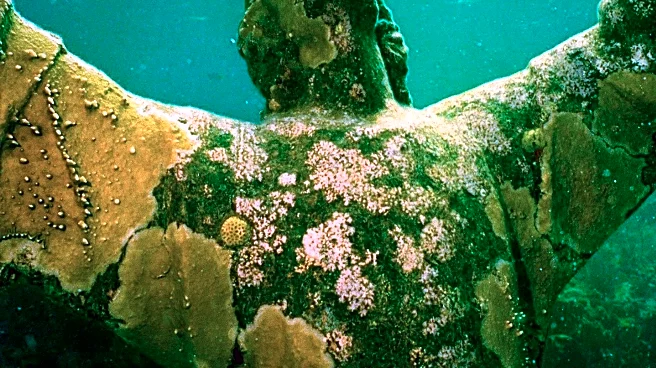What's Happening?
In a routine conservation effort, Italian police divers have cleaned the 'Christ of the Abyss' statue, a prominent underwater monument located off the Ligurian coast near Portofino. The statue, which was submerged in 1954, stands as a tribute to those lost at sea and is crafted from bronze using melted-down medals and military artifacts. Situated 300 meters from the shore at a depth of 18 meters, the statue is a popular site for divers and marine enthusiasts. The cleaning process involves using pressurized seawater to remove biological growths without damaging the statue or the marine environment. This method, adopted in 2004, replaced previous techniques that inadvertently harmed the statue's surface.
Why It's Important?
The 'Christ of the Abyss' is a significant cultural and historical landmark, symbolizing sacrifice and remembrance. Its preservation is essential for maintaining its status as a major tourist attraction and dive site in the Mediterranean. The environmentally friendly cleaning process underscores the importance of sustainable conservation practices, ensuring that the statue remains intact for future generations while minimizing ecological impact. This approach highlights the balance between cultural heritage preservation and environmental stewardship, serving as a model for similar efforts globally.
What's Next?
Future conservation efforts will likely continue to focus on sustainable practices to maintain the statue's integrity. As tourism and interest in marine heritage grow, stakeholders may consider additional measures to protect the site from environmental and human-induced threats. These efforts could include enhanced monitoring and educational initiatives to raise awareness about the importance of preserving underwater cultural heritage.

